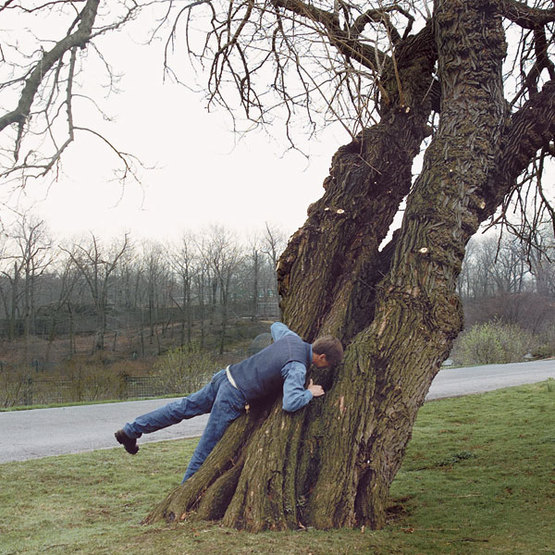
As an arborist, I’m trained to have a discerning eye. While most people drive up to a stop sign and look to the left and to the right, I look left, right, and up. I avoid some intersections because I know what’s growing on the corner—a tree with a structural defect that needs only a strong wind or an ice storm to send it crashing to the ground. Though tree defects are easy to spot if you know what to look for, the untrained eye may have a hard time recognizing the signs of a tree in serious trouble.
Structural defects occur in trees for a number of reasons, and even though a tree may be structurally compromised, it could live on for years. One example is a tree with a hollowed-out trunk. Since fluids are conducted upward in the outer rings of wood and downward in the tissue just inside the bark, a tree can be big and green yet be mostly hollow. Physiologically, this tree is still functioning, but it may not be structurally sound. One stiff wind could send it toppling.
Sometimes solving the problem a hazardous tree may pose is as simple as moving the target that makes it a hazard. For example, if a limb is in danger of splitting from a trunk and falling on the picnic table below, moving the picnic table or cabling the limb may mitigate the hazard. In other cases, a health-care program designed to increase a tree’s vigor may help it overcome minor root damage or the stress caused by insect or disease damage.
Seven reasons to call an arborist
1. Cracks
2. Splits
3. Mushrooms
4. Hollows
5. Dead wood
6. Hangers
7. Tilting
Some splits require cabling so they won’t crack
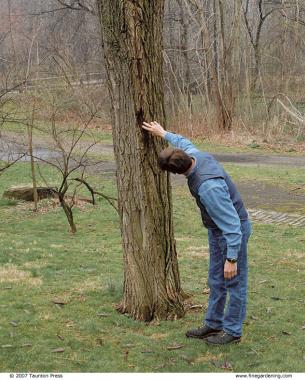

Splits and cracks where branches meet trunks or where trunks diverge pose the most serious hazards. Once underway, these structural failures will only increase in size due to the stresses caused by wind, snow, and the natural process of leafing out. Trees like maples and ashes have growth habits that make them more prone to splits and cracks than other trees are.
Depending on the presence of a target (e.g., picnic table, garage), the size of the crack, and the aesthetics involved, some branch unions can be stabilized by using cables to support the weight of the defective area. Cabling is a process by which a seven-strand galvanized steel cable is anchored to two stems or limbs two-thirds to three-quarters of the way above the defect.
In some instances, cabling may not be effective. The only way to know is to have an arborist examine the crotch to determine if cabling will be supportive. The alternative is to remove the branch or stem to protect both the remaining tree and people or objects below it.
Mushrooms indicate root or trunk problems
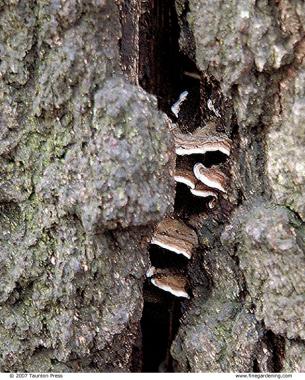

Mushrooms growing on the ground at the base of a tree or even on the tree itself may be an indication of serious problems in the roots or in the trunk. Mushrooms are the fruiting structures of fungi, and many fungi are capable of damaging trees.
Some fungi are opportunistic, producing mushrooms only after damage has been done to the the tree, such as a wound caused by a lawnmower; these don’t cause the problem, but rather signal that there is one. Other fungi attack weakened or damaged roots and are able to further break down the tree’s defenses; these are pathogenic. A tree care professional can tell the difference between the two.
Tree hollows lead to loss of structural integrity
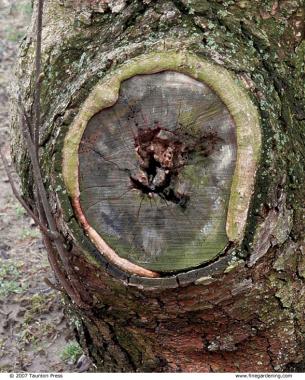
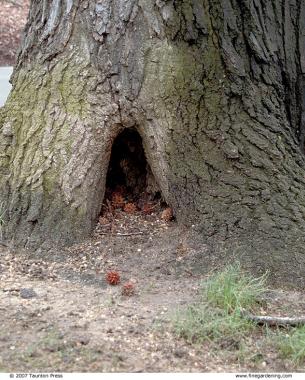
Openings in tree trunks, such as squirrel holes, are evidence of internal hollows and the loss of structural integrity. Many times these hollows are not large enough to make a tree a hazard, but it is best to have them looked at by an arborist to be sure. Determining the structural strength of a hollow tree is as much art as science, and experience on the part of the arborist goes a long way in making the diagnosis.
The size of a cavity in a tree can be determined four ways: by visual observation, by drilling, by removing a core of wood from the tree, or by using a graphing device. The most accurate way to measure a hollow is with a Resistograph, which uses a small drill to measure wood density. The results of the test are then indicated on a graph. This tool can detect even minor changes in the density of wood due to decay. Decay or hollows near the base of the tree are often associated with decay in the roots as well and should be evaluated promptly. Hollows associated with root problems often occur after root damage or damage to the base of the tree. Root damage may, in turn, affect the vigor of the tree.
What is an arborist?
If you really want to know how others see your profession, listen to your children explain what you do for a living. In my family’s case, “My dad wanders around people’s trees, digs holes, thinks a lot, then writes them letters” means that dad is an arboricultural consultant.
While arborist, tree surgeon, tree doctor, and arboriculturist are all terms used to describe what I do, arborist is probably the term most often used.
An arborist is a tree-care professional who may offer tree-care advice but spends more time pruning, cabling, controlling insects, and fertilizing trees than just assessing a tree’s condition. An arboricultural consultant specializes in complex tree assessment but leaves the actual work of correcting a diagnosed problem to an arborist whom he may employ or recommend.
Certification by the International Society of Arboriculture accredits an arborist’s basic knowledge and understanding of trees, as does active involvement in other professional organizations.
Tilting trees may have compromised root systems

Although most root failure is not evident to the eye, if a tree appears to be tilted, there’s a good chance it has a root problem. Shifting or tilting of a tree, particularly after severe winds, may indicate decay in the roots.
With tilting trees, there’s often a lifting of the soil within a few feet of the trunk. If this is a recent occurrence, it is important to have the condition evaluated. A tree that has broken contact with the soil has lost a considerable part of its stability, and there is little a homeowner can do in that case other than have the tree removed.
Dead wood may signal a problem underground
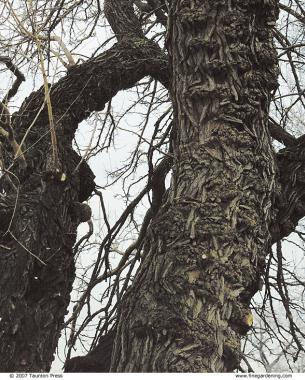
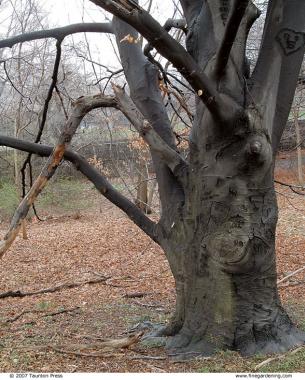
All trees have some dead branches, but many dead limbs near the top of the tree may signal a problem in the root system. An arborist should be able to determine the cause of the stress, be it a fungal disease affecting the roots or compaction damage inflicted during a construction process. Once the cause of the stress is determined, your arborist will decide if a holistic approach would be useful to lessen stress on the tree and encourage the recovery process or if the tree should be removed.
In addition to dead wood, broken and hanging branches caused by ice or snow accumulation or excessive winds are obvious hazards that should be attended to quickly, as they may fall without provocation. Broken limbs can weigh hundreds of pounds and can cause severe damage to property or to people. Instead of trying to remove these branches on your own, call a qualified arborist or tree-care professional for removal; they have the machinery and equipment needed to do the job correctly. Any branch stubs left once the broken branch has been removed should be properly pruned to the branch collar or to a larger branch, not only for aesthetic reasons but also for the health of the tree.
Prevent problems by being proactive
Damaged root systems can lead to shifting trees, dead wood in the upper portion of the tree, and mushrooms living on dead or damaged roots, so minimizing damage to tree roots is a good idea. One way to do this is to involve an arborist during the planning phase of any construction project where trees could be negatively affected. Having an arborist recommend trees to be protected and methods of protection may save having to remove a mature tree from your landscape years down the road.
Lawnmowers are the cause of many problems at the base of trees, so providing a mulch area around trees to keep mowers away is important. Improper planting can lead to root rot and damage to the bark of the lower trunk, as can the application of too much mulch. Mulch should be applied no more than 2 inches thick, and it should be kept away from the trunk bark.
Trees don’t live forever. As a tree ages, chances are it will develop a condition that will affect its health. Being able to spot the signs of the some of the most common tree problems can hasten the diagnosis of a potentially life-threatening condition. Armed with this knowledge, you will be able to speak with confidence to an arborist about what’s ailing your tree.

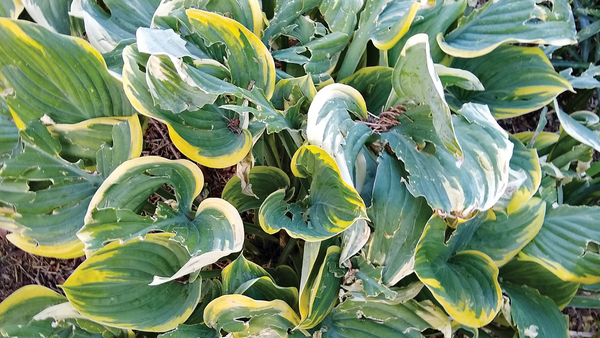
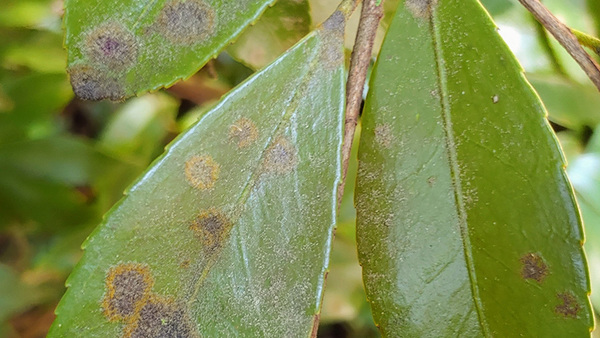

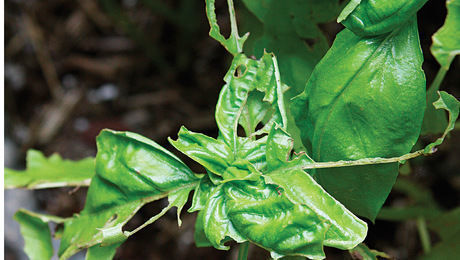
















Comments
Great article. Gets right to the point!
very informative with one major exception-lets please remember that tree' imperfections' serve the natural world in an important way, not discussed in this article. That hollow may house a raccoon, squirrel, pileated woodpecker, owl or smaller bird who are raising their young then using same, as needed shelter in bad, inclimate winter weather. The dead wood being eaten by insects becomes a habitat food source for the same birds who depend on up to some 9,000 catapillars in a 2 weeks period from hatching to fledging. Our suburban habitats leave fewer and fewer options for wildlife to exist, so lets be informed stewards for all God's living things. A great reference book explaining this vital interplay is by Doug Tallamy's 'Bringing Nature Home'. Thanks for this great article with terrific pictures of tree problems.
Log in or create an account to post a comment.
Sign up Log in